Review: London Taxi TX4, Test-Driven In India
Rarely does it happen that I get so excited to get up on a Monday morning, especially after a late night on a Sunday. But it was different this Monday, I was driving all the way from Mumbai to Pune early morning to drive a taxi. Yes a taxi, but this is no normal taxi, you see. It’s the iconic cab, made by the London Taxi Company. Popularly called the black cab or the hackney carriage, the London Taxi is a rare sight in India, because there are just six of these in India. I drove a red one.
These London Taxis belong to the Panchshil Realty group, which runs a large number of premium hotels in Pune. Panchshil is one of the premier real estate developers in Pune. The company has developed some premium properties in Pune, including the Marriot, and a few office buildings for companies such as NVIDIA, Suzlon and Siemens. With such high-rolling clientele, it was imperative to have a vehicle which would be unlike any other on Pune roads. With Rollers and Bentleys in short supply, a fleet of London Taxis landed in Pune.
A Brief History – The London Taxi is made especially for well, London. The vehicle has specifications and features which make it the best taxi for the streets of London, helping drivers maneuver with ease and ferry their passengers in utmost comfort. A taxi needs to be low on maintenance and easy to service, and that is where the London Taxi excels. The vehicle is built extremely well and requires very little maintenance.
In the 1950s, the Austin FX4 came with significant improvements over its predecessor, the, you guessed it, FX3. In 1984, London Taxi International was formed, it changed its name to the London Taxi Company in 2010. The FX4 was in service for 39 years, before it was pulled off the market in 1997 as it had aged. It was replaced by the TX1, a modern taxi, but it maintained the spirit of the London Taxi. It was in use for 5 years and was succeeded by the TXII in 2002. The major difference between the TX1 and TXII was the change of engine from Nissan to Ford.
In 2006, the TXII retired, an was replaced by the TX4. The TX4 is the latest model in the London Taxi line-up. The company has a joint venture with Geely (of Volvo fame) in China to manufacture the TX4, which started in 2008. This led to the London Taxi being manufactured entirely in China and being imported to the UK via SKD units. A passenger version of the TX4 is in the cards as well, it will be called the TXN.
I drove the latest true TX4 taxi model. The design is very retro and attracts enormous attention. The front headlights are rounded, giving the impression of old Bentleys. The side profile is quite bulbous. The rear is typical old British design. The vehicle runs on 175 width, 16-inch tyres and the alloys have 6-bolts on them, to prevent robbery I presume. The antenna is placed at the rear. The rear doors have a provision below them to house a wheel chair tray.
Step inside and you will notice the driver centric dashboard. The center console is positioned towards the driver and there are a ton of buttons on it. The buttons between the AC vents and the audio system are for the interior lights, headlights, hazard lights, fog lights and beam adjustment. Below the audio system are the AC controls and the intercom controls. The left side of the dashboard has the fuse box. The 3-spoke steering wheel houses the LTI name (London Taxi International), the instrument cluster is quite retro and features the tachometer, speedometer, fuel gauge, temperature meter, odometer and trip meter. The driver side door has controls for the door locking and unlocking and front door windows. There is a partition between the driver and the passenger compartment. There is no co-driver seat in the front, the space is meant to keep luggage, because the London Taxi has no usable boot, as they call the trunk where that taxi is in daily use. The left door has a rope, so that the driver can close the door without having to run around the vehicle. The boot stores the spare tire and the wheel chair tray.
I was surprised by the level of comfort and luxury in the rear. There is just one bench, which can accommodate two people in extreme comfort. The seats are placed on the last row and with no middle row, the leg room is extremely good and once can stretch their legs without thinking twice. The rear passengers have their own music system, AC vents, refrigerator, television, etc. There is ample space to keep stuff with lots of places to keep magazines, papers and the like. The Alpine speakers sound extremely good and most of the features here are options (such as the leather seats and the DVD system), which Panchshil opted for. The rear passengers also have their own set of controls for the power windows, door lock/unlock, lights and air-conditioner. There is an intercom connection too, so that the passengers and driver can talk to each other.
Switch on the London Taxi, and its 2.5-litre diesel engine comes to life without any noise whatsoever. The engine is developed by VM Motori and is a 4-cylinder, 16 valve, DOHC unit with a turbocharger, producing 100 BHP of peak power at 4000 RPM and 240 Nm of peak torque at 1800 RPM. The engine is mated to a 5-speed automatic gearbox and is Euro 5 compliant. The gearshift is smooth, but toggling the gear knob from Drive to Park or Reverse does require some effort. A petrol engine is also available with a manual gearbox, but that is only for outside the UK, mainly for China.
The engine has decent performance and never feels sluggish. Being a taxi, seldom does high end performance matter and if need be, the London Taxi has the goods to get you to the airport on time. The fuel efficiency is 12 km/l, which is quite good. An electric version is in the cards as well. The brakes are servo assisted with a split hydraulic system. There is electronically controlled ABS as well. Pedal feel is a little disappointing with very little play. One has to stand on the brakes with all force to stop quickly. The reason for the brakes performing so poorly can be attributed to the near two ton weight of the vehicle. The London Taxi uses double wishbone coil-springs with anti-roll bar suspension at the front and solid axle coil springs in the rear. Ride quality is good, but some bumps do filter into the cabin.
The best feature of the London Taxi is its 3.8-meter turning radius. One can simply take a U-turn on a two lane road, without having to reverse.
While driving the London Taxi, I was so amused by the turn radius, that I started to take so many U-turns that our support car was lagging far behind, reversing a couple of times to catch up with me.
This turn radius comes to you courtesy of the Savoy Hotel in London. The Savoy has a famously small roundabout at its entrance. This resulted in all London Taxis legally requiring a tiny little turn radius.
The TX4 is put together very well and requires very little maintenance. The panels are bolt-on making replacement extremely cheap. The body is made of hydroformed ladder frame with a separate body. There is a service center in Pune, which does service the TX4, so Panchshil does not have any problems with the upkeep of their London Taxi fleet.
The vehicle looks unique, retro and easily stands to grab attention like no other vehicle on the road. The rare sightings of this vehicle only means that on-goers gawk at you like you are in a Rolls-Royce Phantom. Hotels get around the sky-high Indian import duty through a special rule that gives preferred treatment to automobiles used in the tourist trade. The law says those low duty tourist cars must be white. Sure they do.
Whats Cool
- Street Presence
- Turning Radius
- Passenger Comfort
- Reliability
Whats UnCool
- Brakes
Faisal Ali Khan is the owner/operator of MotorBeam.com, a website covering the auto industry of India.
More by Faisal Ali Khan
Latest Car Reviews
Read moreLatest Product Reviews
Read moreRecent Comments
- V8fairy Not scared, but I would be reluctant to put my trust in it. The technology is just not quite there yet
- V8fairy Headlights that switch on/off with the ignition - similar to the requirement that Sweden has- lights must run any time the car is on.Definitely knobs and buttons, touchscreens should only be for navigation and phone mirroring and configuration of non essential items like stereo balance/ fade etc>Bagpipes for following too close.A following distance warning system - I'd be happy to see made mandatory. And bagpipes would be a good choice for this, so hard to put up with!ABS probably should be a mandatory requirementI personally would like to have blind spot monitoring, although should absolutely NOT be mandatory. Is there a blind spot monitoring kit that could be rerofitted to a 1980 Cadillac?
- IBx1 A manual transmission
- Bd2 All these inane posts (often referencing Hyundai, Kia) the past week are by "Anal" who has been using my handle, so just ignore them...
- 3-On-The-Tree I was disappointed that when I bought my 2002 Suzuki GSX1300R that the Europeans put a mandatory speed limiter on it from 197mph down to 186mph for the 2002 year U.S models.


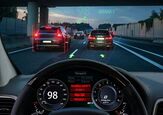



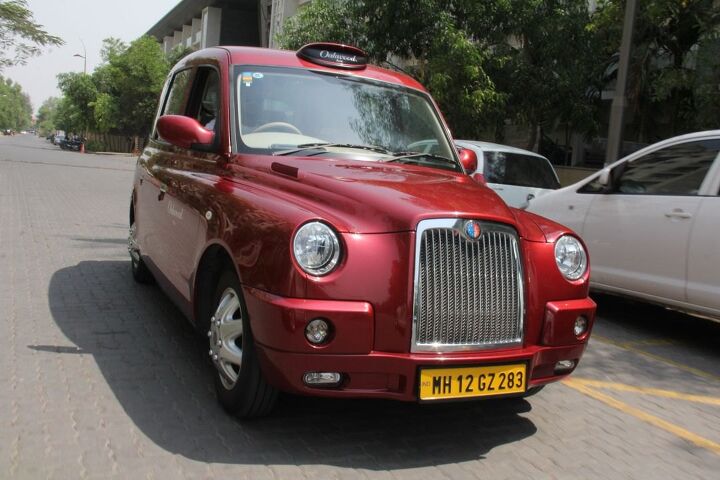
































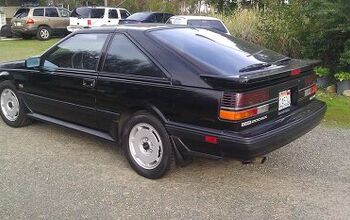
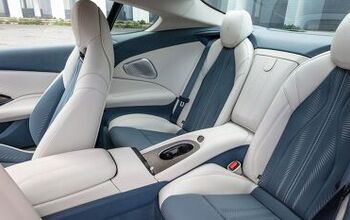




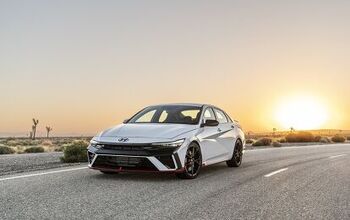

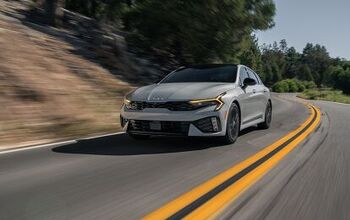







Comments
Join the conversation
When J.Clarkson tested London Cab (same model) for Sunday Times(of London) 08/2009 he wrote that he understood why many cabbies are so angry and rude. Additionally to bad brakes the cabin ergonomics were just awful, steering wheel and seat positioning etc. were totally wrong and very uncomfortable. Basically his opinion was that the faster the taxis move away from that type, the better. Review is unfortunately behind the Times' pay wall now. http://www.timesonline.co.uk/tol/driving/jeremy_clarkson/article743518.ece
Why anyone would gripe about the "style" of this article is a mystery. These types just like to flount what they think is their superior handle on writing. As is this case, they are usually wrong. I thought the piece was interesting and very well done. Keep up the good work! [is that a sentence fragment?]